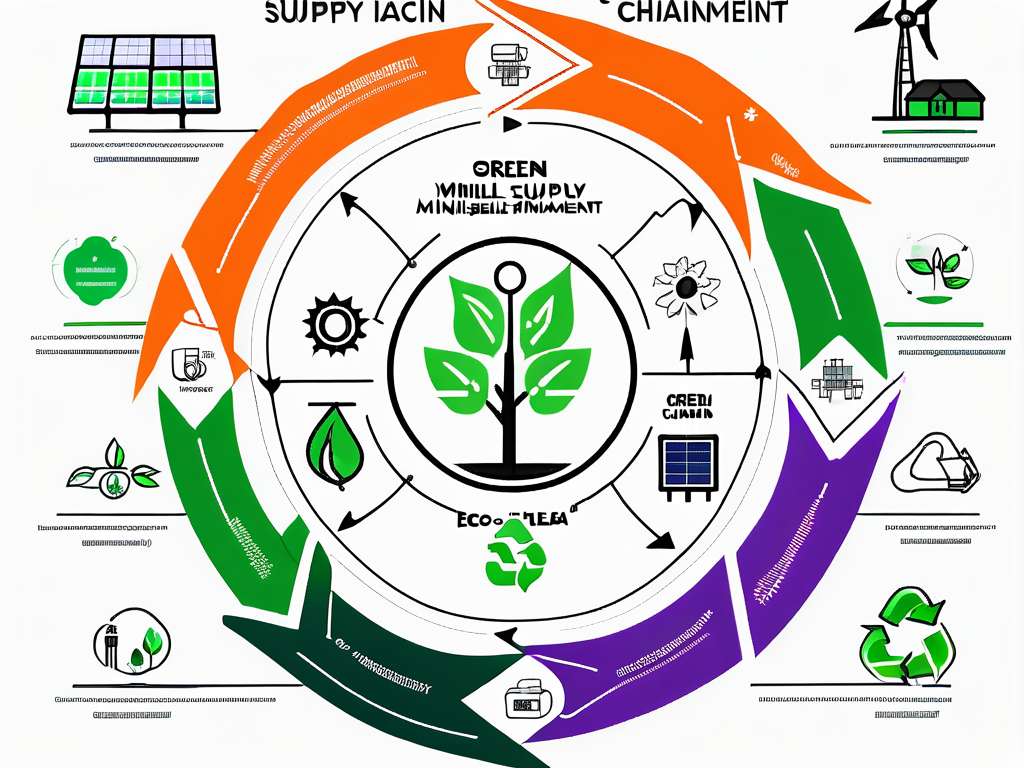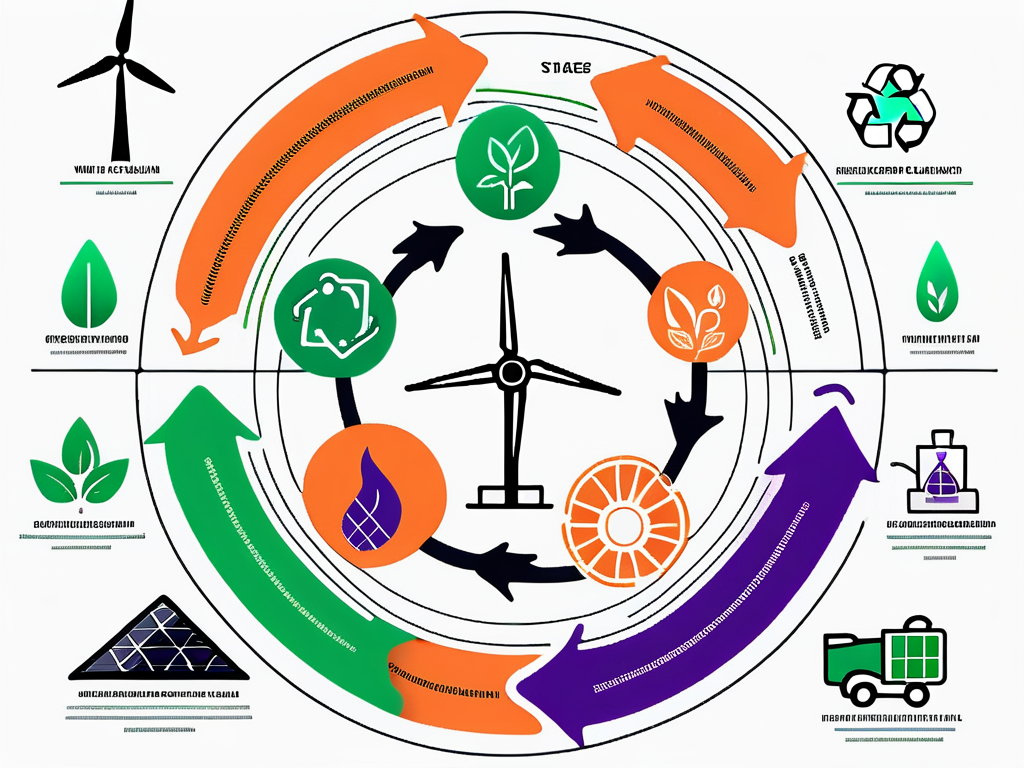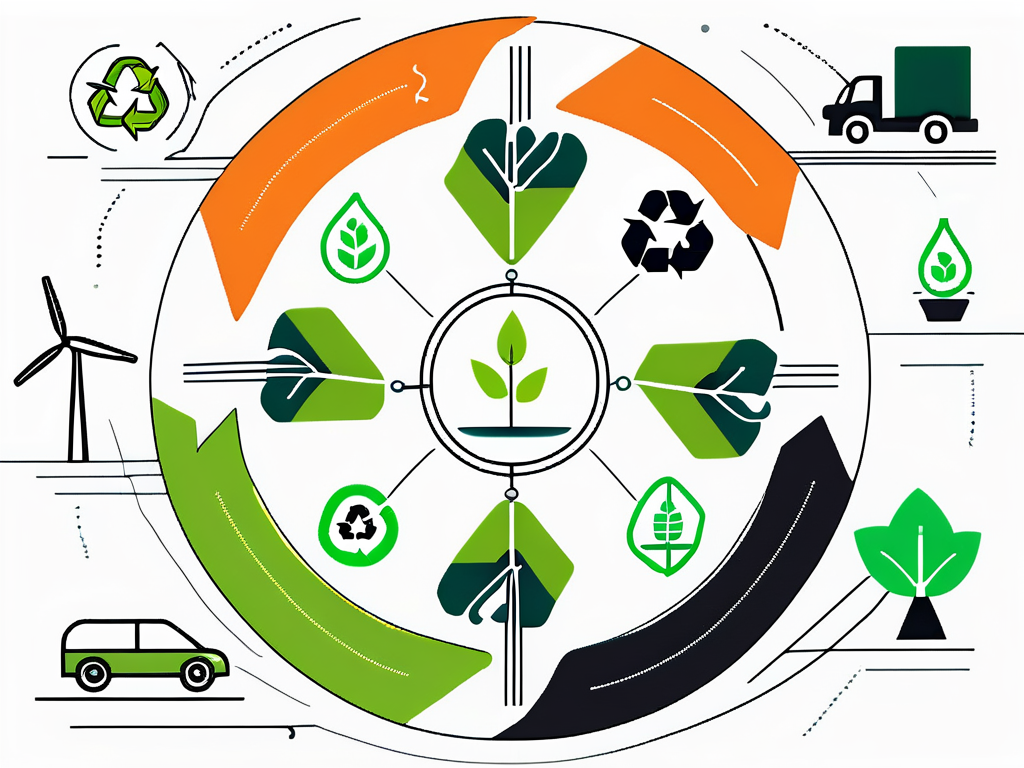How to Implement Green Supply Chain Management? Step-by-Step Guide

Did you know that companies with sustainable supply chain practices have been found to outperform their peers by up to 15%?
As sustainability becomes an increasingly important consideration for companies around the world, implementing green supply chain management is crucial.
By integrating environmental practices into their supply chain operations, companies can not only minimize their impact on the planet but also drive profitability and gain a competitive advantage. Let’s see how you can deal with this implementation.
5 Steps to Implement Green Supply Chain Management
5 key steps are involved in the implementation of green supply chain management. These are:
- Conducting an Environmental Audit
- Developing a Green Procurement Strategy
- Incorporating Waste Management Techniques
- Implementing Energy Efficiency Measures
- Collaborating with Stakeholders
Let’s discuss them in more detail, step-by-step.
Step 1: Conduct an Environmental Audit
Before implementing green supply chain management practices, it is essential to conduct a comprehensive environmental audit.
This assessment helps identify areas of improvement and sets benchmarks for future progress. The audit should evaluate various aspects, such as energy consumption, waste generation, water usage, and carbon emissions.

An environmental audit provides the foundation for developing an effective sustainability strategy. It helps companies understand their current environmental impact and identify specific areas where changes can be made.
Step 2: Developing a Green Procurement Strategy
Green procurement involves selecting suppliers and materials based on their environmental impact. Companies can prioritize suppliers who adhere to environmentally friendly practices, source materials that are sustainably produced, and promote circular economy principles.
Developing a green procurement strategy requires collaboration with suppliers and ensuring transparency throughout the supply chain. By working closely with partners, companies can create a network of suppliers committed to sustainability, reducing the overall environmental footprint of their supply chain.
Step 3: Incorporate Waste Management Techniques
Waste management is a critical aspect of green supply chain management. Companies should implement strategies to:
- reduce
- reuse
- and recycle waste throughout their operations
This includes minimizing packaging waste, finding innovative ways to repurpose materials, and implementing efficient disposal processes.
Incorporating waste management techniques not only benefits the environment but also presents cost-saving opportunities. By reducing waste, companies can lower disposal costs, optimize resource utilization, and create a positive brand image.
Step 4: Implement Energy Efficiency Measures
In addition to conducting an environmental audit and developing a green procurement strategy, implementing energy efficiency measures is another crucial step in implementing green supply chain management.
Companies can explore various energy-saving initiatives, such as:
- upgrading to energy-efficient equipment
- optimizing transportation routes
- implementing smart energy management systems
By reducing energy consumption, companies can not only lower their carbon footprint but also achieve significant cost savings. Energy-efficient practices not only benefit the environment but also contribute to long-term financial sustainability.
Step 5: Collaborate with Stakeholders
Implementing green supply chain management requires collaboration with various stakeholders, including suppliers, customers, and employees. Engaging stakeholders in sustainability initiatives can help foster a culture of environmental responsibility and drive continuous improvement.
Companies can involve suppliers in the decision-making process, seeking their input on sustainable practices and encouraging them to adopt greener approaches. Engaging customers through education and awareness campaigns can also create a demand for environmentally friendly products and services.
Furthermore, involving employees in sustainability efforts through training programs and incentive schemes can enhance their commitment to green practices and create a sense of shared responsibility.
By expanding the scope of collaboration beyond the company’s boundaries, organizations can create a more sustainable supply chain that benefits not only the environment but also the overall business ecosystem.
Challenges in Implementing Green Supply Chain Management
One of the biggest challenges in implementing green supply chain management is resistance to change. Some stakeholders within a company may be resistant to adopting sustainable practices due to perceived additional costs or disruptions to existing processes.

Effective change management strategies, stakeholder engagement, and demonstrating the business benefits of sustainability are key to overcoming resistance. By communicating the long-term value of green supply chain management and involving employees at all levels, companies can create a culture of sustainability.
It is crucial for companies to address the concerns of employees who may fear that implementing green practices could jeopardize their job security or require them to learn new skills. Providing training and support during the transition period can help alleviate these concerns and ensure a smooth adoption of sustainable practices.
Managing Costs and Investments
Another challenge in implementing green supply chain management is managing costs and investments. While sustainable practices lead to cost savings, there are often upfront investments required.
Companies should conduct a cost-benefit analysis to assess the financial implications of implementing green initiatives. This analysis can help identify areas where investments can yield significant returns in terms of:
- cost savings
- improved efficiency
- reduced environmental impact
Moreover, companies can explore partnerships with suppliers, 3PL companies, and other stakeholders to share the costs of implementing green supply chain practices. Collaborative efforts can not only reduce financial burdens but also foster innovation and knowledge sharing among partners, leading to more effective and sustainable solutions.
Measuring the Success of Green Supply Chain Management – Main KPIs
Effective measurement is crucial to track the success of green supply chain management initiatives. Key performance indicators (KPIs) can help companies monitor and evaluate their performance against sustainability goals. These KPIs provide valuable insights into the environmental impact of supply chain activities and enable companies to make informed decisions for improvement.
- Carbon footprint: Measuring and reducing greenhouse gas emissions throughout the supply chain. This KPI not only helps companies assess their environmental impact but also encourages the adoption of cleaner energy sources and the implementation of energy-efficient practices.
- Waste diversion rate: Calculating the percentage of waste diverted from landfills through recycling, reusing, or composting. By monitoring this KPI, companies can identify opportunities for waste reduction and explore innovative ways to minimize their environmental footprint.
- Energy efficiency: Assessing energy consumption and implementing measures to optimize efficiency. This KPI allows companies to identify energy-intensive processes and find ways to reduce energy consumption, such as adopting renewable energy sources or implementing energy-saving technologies.
- Supplier sustainability: Evaluating and monitoring the sustainability practices of suppliers. This KPI ensures that suppliers align with the company’s sustainability goals and helps foster a more sustainable supply chain ecosystem.
Future Trends in Green Supply Chain Management
The future of green supply chain management lies in technological advancements. Breakthroughs in areas such as artificial intelligence, blockchain, and Internet of Things (IoT) offer novel solutions for optimizing sustainability.

Technologies like IoT sensors can enable real-time monitoring of energy consumption and waste generation, providing valuable data for decision-making. Blockchain can enhance supply chain transparency, ensuring the integrity of sustainability claims.
Artificial intelligence and machine learning can analyze vast amounts of data to identify opportunities for improvement and automate sustainable practices.
Policy and Regulatory Changes Impacting Green Supply Chains
Policy and regulatory changes also shape the future of green supply chain management. Governments around the world are increasingly recognizing the need for sustainable practices and enacting policies to support them.
Companies must stay informed about regulatory developments in their respective industries and proactively adapt their supply chain operations to comply with emerging requirements. By staying ahead of regulatory changes, companies can not only avoid penalties but also position themselves as leaders in sustainable business practices.
Embrace the Journey of Green Supply Chain Management
Implementing green supply chain management is a journey that requires commitment, collaboration, and continuous improvement. By integrating sustainability into their core operations, companies can drive positive environmental impact, enhance their reputation, and build a more resilient and profitable future.